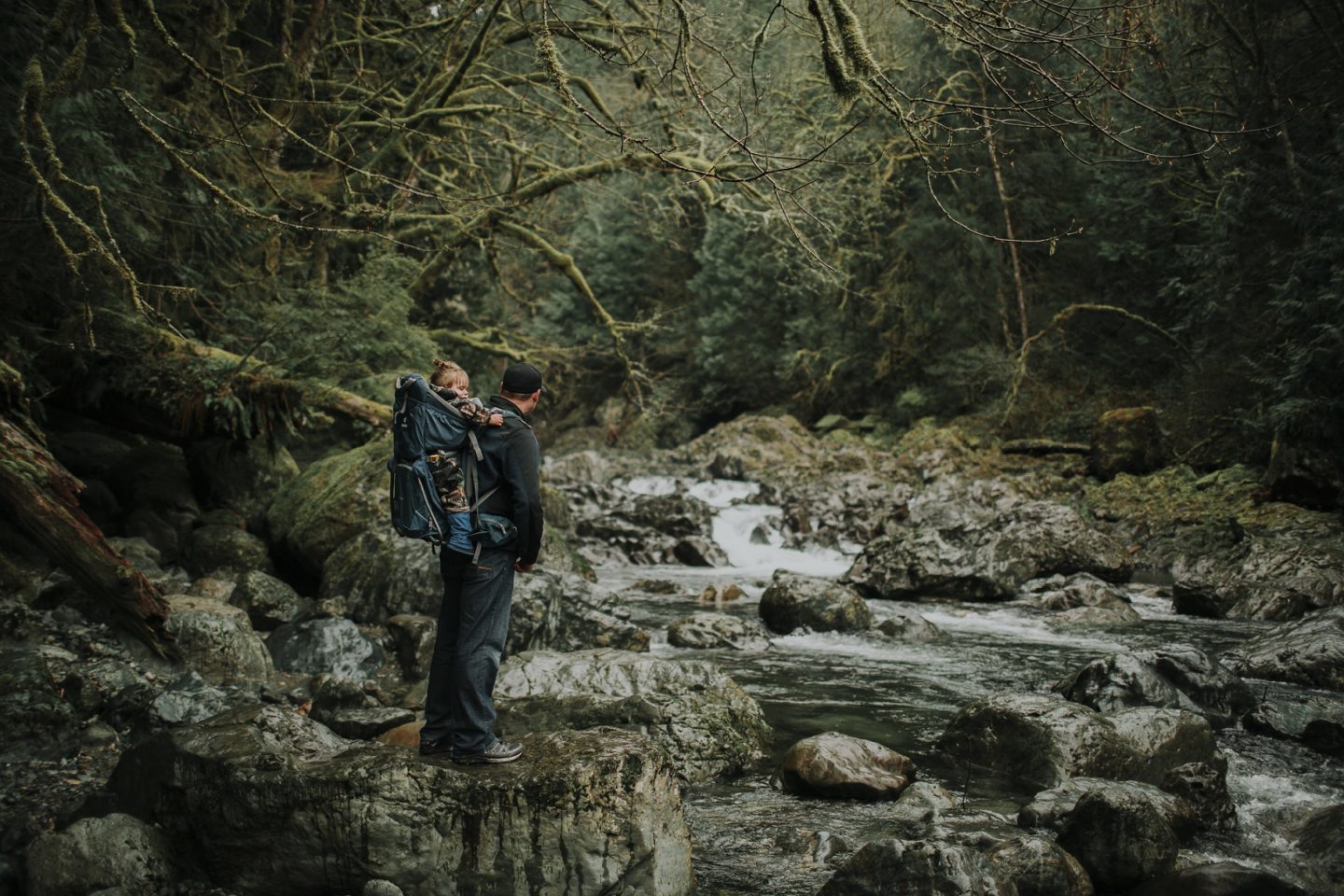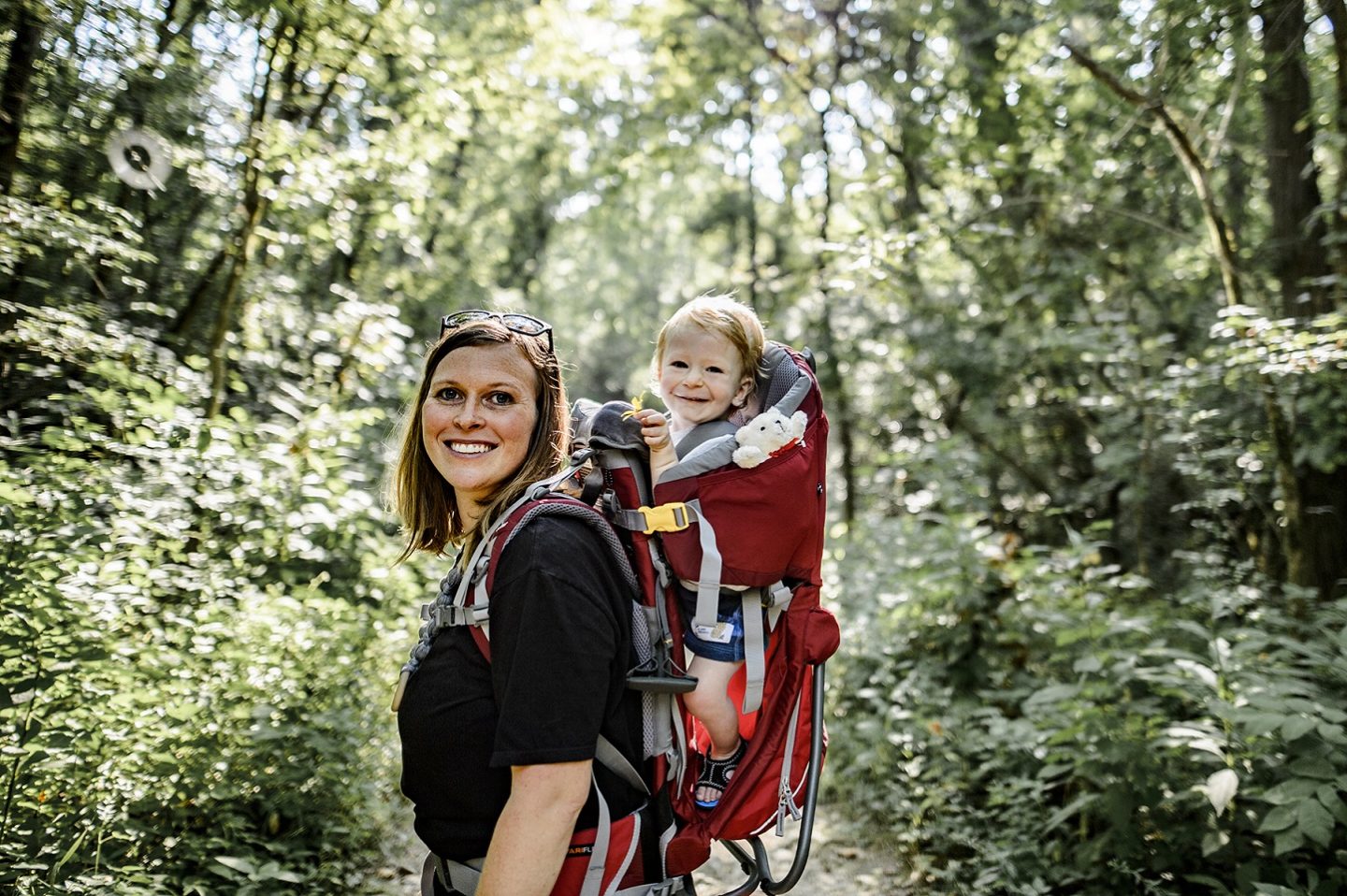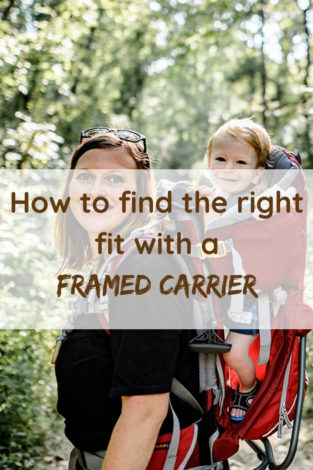How to find the right fit with a frame carrier
Finding a hard-frame carrier that fits mama (or daddy!) and her little one can be confusing and overwhelming to both those new to wearing and even those who are experienced wearers. Just like other types of baby carriers, hard-frame carriers vary between brand and model, making it hard to recommend the “perfect” or “best” carrier outright. Your best bet is to try on several and see which one fits you and your child best. However, there are some key features and guidelines that you should keep in mind when shopping for a frame carrier that might make finding the best fit for you easier.
Here are some basic recommendations for hard-frame carrier safety and fit. Keep in mind these fit and feel differently than soft-structured baby carriers (which come with belts and buckles and sits baby close to your body).




Fit for the wearer
- While it's important to keep baby close and tight to your body at all times (as with a soft-structured carrier), frame carriers are designed to carry baby slightly away from your body to keep you cool while hiking and allow more space to carry supplies. As long as your baby is secured in the harness properly, they are safe — even if they are not directly in contact with your body. This will feel strange if you are used to soft-structured carriers where you feel baby’s every move.
- Torso length fit is the single most important aspect of hard-frame carrier fit. I cannot stress this enough. The proper length pack will place the waist and shoulders in the proper places, allowing even distribution of the pack’s weight and will be the most comfortable for you. If it's too long, it will result in improper waistband placement or shoulder gaping. Too short will result in waistband digging into your stomach or pinching on your shoulders. Either way, who wants to hike with leg or shoulder pain?
- These carriers are designed for the waist belt to sit directly on your hips at the joint. This may feel strange if you are used to a buckle carrier that sits on your natural waist (although some buckle carriers are designed to sit on your hips as well). Direct pressure from the carrier being too low on your hip joint can add stress and drag to your legs, making it harder to hike. If you are not used to the fit and design of hiking with a pack, this could become painful after a while. Wearing a hard-frame carrier at your natural waist will place the carrier too high on your back, making it too top-heavy. This will place all the weight on your upper back and can become painful very quickly.
- The shoulder straps should sit firmly on your shoulders. Any gap can add strain to your upper back, quickly becoming uncomfortable. A gap in the strap is not necessarily unsafe, but comfort on a long hike is the goal.
- These carriers are not cheap, so there is no point in settling for a carrier that sort of fits. It may also be important to point out that hard-frame carriers may not be as easily interchanged between caregivers. It will help to determine who will do the majority of the babywearing while hiking before making the purchase. Take the time to find a carrier that fits properly and you will be very happy.
Fit for the wearee
- There is some concern over baby being in a seated position in the harness, rather than a spread-squat with knees higher than their bum. This issue is similar to the narrow base carrier debate. A seated position will not cause your baby to have hip dysplasia or other musculoskeletal issues. If your baby has no known issues, they will be just fine. If your child does have a known hip or other issues, then you should consult with their physician before using a hard-frame carrier.
- Hard-frame carriers are for babies who sit upright unassisted. The harness will not provide enough support on its own. The leg passes in most cockpits are too wide to be comfortable for smaller babies and newborns. And there are no infant inserts or hacks to make the carrier safe before this milestone.
- Make sure the harness fits against baby at all times. If by chance you fell, this keeps your baby from being thrown from the carrier. Think of them like a car seat harness built into your carrier. You want the strap snug with very little gaping (but not so tight it is hurting them). Make sure every buckle or clip is securely clicked into place. If the seat height adjusts, make sure it is the proper setting for your child. You want baby’s head to clear the front of the cockpit and shoulders below the back of the cockpit. For toddlers or preschooler, shoulders below the back is not a major safety concern, but ideal. Just make sure they are not so high up they can lean back and tip you over or fall out. Legs should be able to move freely and bend easily at the knees. Baby should be able to move a bit for comfort, but in general not be able to wobble over or jump side to side. If this is the case, you will need to adjust the width of the cockpit if possible (most have straps that tighten the harness widthwise).
- Please keep the weight limit of the carrier in mind. It varies between carriers, so please check the manual. The weight minimum guideline for when baby might be able to fit properly in the harness does not replace the guideline that baby needs to be sitting unassisted. For example, the minimum might be 16 lbs., which my son hit at about 4 months old but he was nowhere near ready to sit up unassisted yet. It would not have been safe to place him in the carrier just because he reached the weight minimum. Likewise, if your child is over the weight limit for the carrier, it is not safe for them to be worn in it. They may be secure in terms of fit, but you run the risk of over stressing the carrier and causing the frame to break. Your child could then fall out or be injured from the broken carrier. There are carriers with higher limits suitable for heavier toddlers or preschoolers though, so you can always upgrade as your child grows.

General Safety Tips
- The general rules of babywearing apply, even though hard-frame carriers fit differently. Please do not do anything on the trail you would not do holding your baby. Wading across a shallow, slow-moving creek is just fine. A large, deep river with swift current is not the best idea. Taking off the carrier with baby secured in it and handing it to a fellow hiker on the other side of a fallen tree is fine too. Tossing the carrier with baby in it up a cliff to your partner, however, is not a good idea. Just use common sense and keep baby safe at all times.
- Hard-frame carriers are only suitable for back carries. They simply will not work for front or hip carries. The torso of the pack will not fit comfortably over your front and the cockpit will block your line of sight entirely. As for hip carries, there is no real logical way to get the carrier to sit securely on your hips. Unlike soft-structured carriers, like a wrap or mei tei, they will not mold to your body shape. The straps cannot be crossed over to secure the carrier to your torso.
- Baby can only face forward in the cockpit as well. Mainly because the harness is not designed to work any other way. Facing forward also allows you to see your baby easily. You can check that they are safe, breathing and generally happy.
- Please keep in mind that the weight limits for the carrier include the weight of your child PLUS any gear you're taking. For example, the weight maximum might be 45 lbs. If you have a 30-lb toddler, 5 lbs of water and 20 lbs of camping supplies, that’s 55 lbs of total weight and you are over the limit and run the risk of the carrier failing.
Read more
- Hard-framed carrier: improve the quality of your hike
- Why you might need a new carrier
- Graduating to frame carriers

Related Content




Comments